Nicolas Copernicus (Mikolaj Kopernik – 1473-1543)
Astronomer, the most famous Polish scientist. Copernicus „De revolutionibus orbium coelestium”, published a few days after his death, gave new currency to the ancient Pythagorean hypothesis that the Sun was at the centre of the universe and that the planets (including the Earth) revolved around the Sun. Theory of Copernicus was acknowledged as religious heresy, and its advocates were severely convicted (eg Giordano Bruno – with combustion on heap).
|
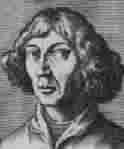 |
Tadeusz Kosciuszko (1746-1817)
Polish and international hero. He was trained as a Polish cadet and studied military subjects in Germany, France, and Italy, with special training in the science of fortification at Brest. Fought for independence of Northern America. Being military engineer he fortified Philadelphia, Saratoga and West Point. Colonel and subsequently general. He returned to Poland 1784, fought against the Russian invasion that ended in the partition of Poland. In 1794 he lead the uprising against the occupation, but was defeated by combined Russian and Prussian forces and imprisoned until 1796.
|
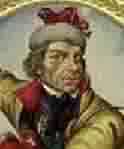 |
Kazimierz Pulaski (1747-1779)
He fought for freedom of motherland against invaders of Polish territory. He became famous as victorious” defender of Czestochowa” against Russian-Prussian armies in 1770. He was exiled from Poland in 1772 for his patriotic activities. In 1777 he joined the army of George Washington, where he became the general of cavalry. He was mortally wounded in the attack on Savannah, dying October 11, 1779.
|
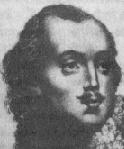 |
Józef Bem (1794-1850)
General of Polish, Hungarian and Turkish armies; an artillery officer and theoretician (theory and construction of rockets). Participated in Polish national uprising 1830-31. In 1848 he took over command of the defense of Vienna against the imperial troops; in November 1848 he took command of the Hungarian army in Transylvania and Banat. At the end of the Hungarian revolution nominated commander-in-chief of the Hungarian army. Subsequently, Bem left for Turkey. In June 1850 he was given the rank of general of division (ferik-pasha), and began to organize troops of Arab cavalry.
|
|
Pawel Edmund Strzelecki (1797-1873)
Polish geographer, geologist and traveller. Member of the Royal Geographical Society in London. He was born in Western Poland under Prussian rule. He examined the mineralogy, geology and in Appalachian Mountains, on Florida and in Mexico. He was discoverer of mineral layers and conductor of meteorological measurements and research of soils in Brazil, Uruguay, Chile (on desert Atacama) on Hawaii, Islands of Polynesia in Australia and on New Zealand and Tasmania. In Snow-Mountains (Australian Alps) Strzelecki detected the highest point of Australia and named it Mount Kosciusko.
|
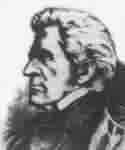 |
Ignacy Domeyko (1802-1889)
Mineralogist and geologist. Friend of A. Mickiewicz. Since 1838 he has been in Chile. Lecturer in Coquimbo Mining Colleague and rector of Santiago University. He was the father of Chilean mining industry. Domeyko produced the first geological map of Chile. He discovered a few until then unknown minerals, founded meteorological net, ethnographical museum, elaborated monograph of Araucania.
|
|
Ignacy Lukasiewicz (1822-1882)
Inventor. „Father of world oil – industry”. As the first in the world he obtained distilled oil and invented the petroleum lamp. In 1853 he used it for lighting General Hospital in Lvov. In1854 he established the world’s first oil “mine” in Bobrka near Krosno.
|
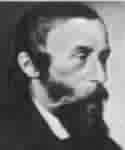 |
Jaroslaw Dabrowski (1836-1871)
Officer of the Russian tsar’s army. Imprisoned for participation in plot against tsar’s absolutism. In 1871 he became the commander-in-chief of French Paris Commune.
|
 |
Zygmunt Wróblewski (1845-1888)
Physicist. Professor of Jagellonian university. Member of the Academy of Sciences. He researched the phenomena of gas diffusion in liquids and solids. Of special importance was his research in the field of low temperatures. Together with K. Olszewski, he liquefied oxygen and nitrogen; he also solidified carbon dioxide and alcohol. Wróblewski counted critical constants of hydrogen.
|
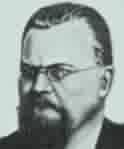 |
Karol Olszewski (1846-1915)
Chemist, physicist and expert of low temperatures; Professor of Jagiellonian University, member of the Academy of Sciences. The first scholar who liquefied nitrogen and oxygen; he also discovered a method of hydrogen liquefaction and constructed machinery for that purpose, which enabled him to reach the then-lowest world temperature, –225 C.
|
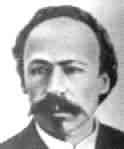 |
Ludwik Zamenhof (1859-1917)
Doctor, creator of the artificial international, language Esperanto. In 1887 he published the first manual and dictionary of Esperanto international language (under pseudonym Doctor Esperanto). Author of series works connected with this problem.
|
|
Maria Sklodowska-Curie (1867-1934)
Outstanding Polish physicist and chemist living and working in France, first woman being the professor of Sorbona, wife of Piere Curie. Together with him discovered 1898 radium and polonium. She twice won the Nobel Prize – 1903 together with her husband (in physics) for research of natural radioactivity, and 1911 (in chemistry) for exhalation of clean radium. In 1914 she founded the Radium Institute in Paris. She was also initiator of the Radium Institute in Warsaw (1932).
|
 |
Józef Pilsudski (1867-1935)
He was born in Russian Poland. Marshal and chief of the state, Prime Minister and minister of military matters, statesman. He was twice imprisoned for anti-Russian activities. During World War I he commanded a Polish force and evicted the Russians from eastern Poland. He was imprisoned by the Germans 1917-18. Creator of the independent Polish state in the period between two World wars. He was elected chief of state, and led a Polish attack on the USSR 1920, driving the Soviets out of Poland. That battle held back propagating of communist ideology in Europe. He retired 1923, but in 1926 led a military coup that established his dictatorship until his death.
|
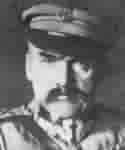 |
Bronislaw Malinowski (1884-1942)
One of the most important anthropologists of the XX century, a founder of social anthropology. He received the doctorate degree from the Jagiellonian University in Krakow, and also the doctor of science from the University of London, since 1938 professor of the Yale University in New Haven. Member of the Polish Academy of Arts. Outstanding representative of functionalism in social anthropology. He conducted terrain research on New Guinea and Triobriand Islands.
|
 |
Ludwik Hirszfeld (1884-1954)
Doctor microbiologist, immunologist and serologist. Member and co-organiser of the Polish Academy of Sciences. Between 1907-1911 he worked in the Institute of Cancer Research in Heidelberg, where – together with German doctor E. van Dungern, created bases of theory about blood-groups, discovered mechanisms of heirdom of blood-groups and introduced their marking (A, B, AB, 0), 1928 accepted as universally on the all world.
|
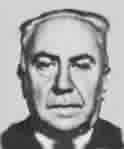 |
St. Maksymilian Maria Kolbe (1894-1941)
Monk, Franciscan. When a prisoner in the Auschwitz concentration camp in 1941, Father Kolbe offered voluntarily to die instead of a unknown co-prisoner, father of few children. The Nazis agreed to the exchange and the heroic priest was starved to death.
Canonised 10.10.1982
|
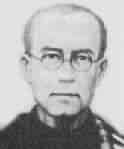 |
Stefan Wyszynski (1901-1981)
Primate of Poland, Archbishop of Warsaw and Gniezno, appointed Cardinal in 1952, professor of canonical law. Advocate of the settlement of the Church – State relations. Wyszynski was imprisoned by the communist government between 1953 and 1956. After his release, Cardinal Wyszynski resumed his position of the spiritual leader of the nation, defending the freedom of religious worship guaranteed by the Constitution. Together with Episcopate of Poland approach German bishops about symbolic reconciliation of Polish and German nations. That step caused negative and impetuous reaction of the communist authorities. Participated in works of the Vatican Council II. He played significant role in the choice of cardinal K. Wojtyla on the papal throne.
|
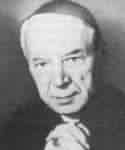 |
John Paul II (1920)
16th October 1978 became the first non-Italian pope for over 400 years and the first Polish pope. Undertook many priestly activities, among them visits to many countries of the world, gaining huge liking and popularity.
Main messages of pontificate of John Paul II are: „new evangelisation” in societies of western and postcommunist countries, respect of human rights, right to work and human dignity, opposing ruthless aspiration for profit, resistance for totalitarianism, especially communist, ecumenism, fight for peace and protection of traditional values and moral order of Catholic Church (eg in matter of the limited participation of women in Church, of celibacy, of contraception and abortion).
|
 |
Lech Walesa (1943)
Union leader, politician. Electrician in Lenin Shipyard in Gdansk. In 1980 he leaded strike in Shipyard. One of the founding members and chairman of the Solidarity free union movement. In the time of the martial-low since 13 December 1981 till 11 November 1982 he was interned in Arlamow. In 1988 he inspired strikes in Gdanska Shipyard. He participated in negotiations with communist authorities, finished with agreements of the Round Table. He was awarded the Nobel Prize for Peace in 1983. Since 1990 till 1995 President of the Republic of Poland.
|
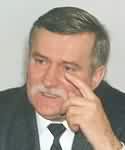 |















